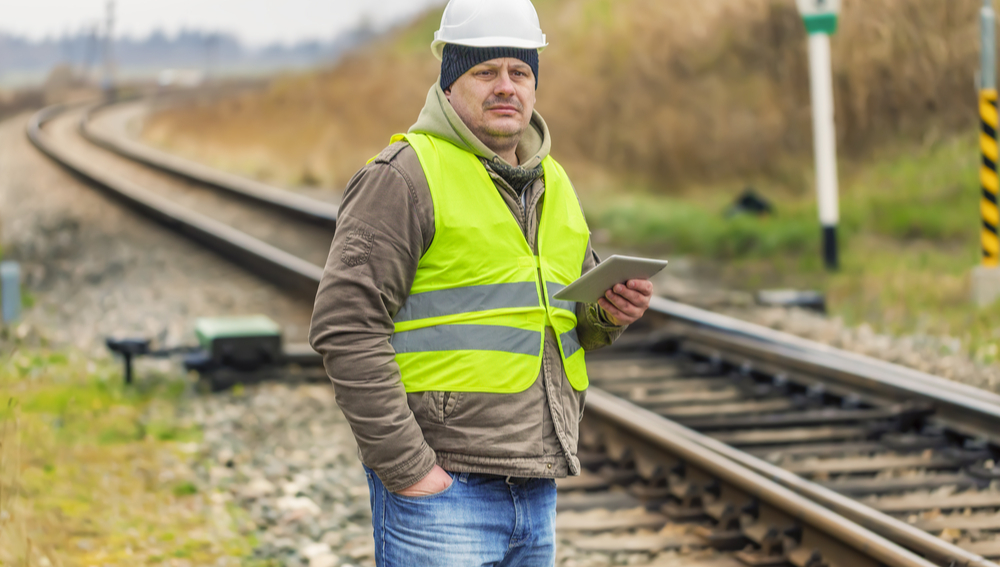Four Examples of How Generative AI can Make Railroads Safer

 Railroads continually strive to improve employee and public safety. New tools have recently emerged to help them do that. Hype aside, railroads can embrace generative AI to address long-standing challenges and make impactful improvements. Generative AI’s capacity to analyze complex data and provide intuitive access to vital safety information is helping railroads reduce risks across their operations. Here are four innovative ways AI is helping to make railroads safer, from personalized risk assessments to creating accessible, interactive formats for essential safety content.
Railroads continually strive to improve employee and public safety. New tools have recently emerged to help them do that. Hype aside, railroads can embrace generative AI to address long-standing challenges and make impactful improvements. Generative AI’s capacity to analyze complex data and provide intuitive access to vital safety information is helping railroads reduce risks across their operations. Here are four innovative ways AI is helping to make railroads safer, from personalized risk assessments to creating accessible, interactive formats for essential safety content.
1. Generating Personalized Risk Reports
Rail operations depend on personnel consistently adhering to safety protocols, but risk factors vary for each individual. First Analytics has been deploying predictive risk scoring models, at the employee–day-shift level, for more than a dozen years. The new innovation is to add a large language model (LLM), a type of generative AI, to work with the outputs the scoring model An LLM can take the risk factor scores from the predictive model, combine it with information about the employee coming on shift, and create a plain language risk assessment report, customized to that employee and their profile. These reports take into account potential risk drivers suge as fatigue, experience, weather, and dozens of other potential risk factors to pinpoint areas for improvement, helping employees stay aware of specific risks and maintain a proactive safety approach.
See this example. Though not perfect yet, with some better configuration and training of the LLM, these reports can become a mechanism of positive employee coaching and reinforcement.
2. Easy Access to Safety Manuals
Rail employees need ready access to extensive safety protocols, which are often buried in hundreds of pages of operational manuals. Through an AI-powered conversational interface, which we call the “Rules Assistant”, railroads can enable employees to ask questions and receive direct responses. The current approach is to do searches of the source documents, which may or may not produce the complete information the person is looking for. An LLM can summarize the protocols or procedures, and provide links to the pages of the documents from which it derived its response.
As an example, see this response when the user (presumed to be a CSX employee), asked “what do I need to know when working with switches?” Note: the CSX safety assistant, and similar assistants we have built for three other Class I railroads, are built on publicly available documents available on their websites. If you would like to try them live, please contact us using the form below and we can give you a link to our demo website.
Whether to confirm speed restrictions or review shoving movement protocols, or a myriad of other topics, this conversational AI interface provides instant access to essential information, keeping safety guidance clear and immediate, while providing references for more studying of the source material.
3. Insights from FRA Safety Databases
Generative AI can also provide easy access to Federal Railfoad Administration (FRA) safety data. Our ChatFRA, an AI tool that interfaces with FRA databases on grade crossing incident and rail equipment accident report data, enables safety professionals to query both structured and unstructured data conversationally. By providing quick, data-driven answers on incident trends, causal factors, and accident types, AI offers safety managers and local authorities insights that support safer operations.
You can check out some ChatFRA examples here. If you would like to try ChatFRA live, please contact us using the form below and we can give you a link to our demo website.
4. Delivering Safety Content in Podcast Format
Increasingly, text-based content, even if simplified and brief, is not easily digestible in our noisy world with many distractions. These days, many people consume content in a podcast, conversational format. Say, for example, with earbuds inserted during a morning run. A 6-12 minute podcast can deliver a key content, and fits within a person’s schedule to take in.
The latest innovation, with the most recent technology releases happening in the Fall of 2024, uses AI to generate content in a conversational, audio summary format. Typically, the conversation is between two AI generated voices which sound nearly indistinguishable from humans. The conversation is generated based on content (documents, videos, web links) that are provided to them.
This technology is very new and has its flaws. Glitches and some off-topic content do rarely occur. And the person creating the the AI podcast has very little control over the final output. But if these technologies follow the trajectories of other AI technologies, this format may well be a key component of safety training.
For an example of such a podcast, check out this audio file, built on two publicly available safety manuals from Union Pacific Railroad.
Conclusion
These are just four examples of how generative AI can improve safety. There are others. Yes, there is a lot of hype and over-promising of these technologies, but with the right approach and the know-how, these tools are proving valuable to reduce incidents and injuries, just as predictive safety analytics started to do over a decade ago in the rail industry.
More information on our safety-related offerings:
For access to the demos or for general inquiries, please complete this form.